Removal Procedure
- Remove the engine assembly. Refer to Engine Replacement .
- Remove the left closeout cover and bolt.
- Remove the right closeout cover and bolt.
- Remove the oil pan bolts.
- Remove the oil pan.
- Drill (3) out the retaining rivets (2), if required.
- Remove the oil pan gasket (1) from the oil pan.
- Discard the gasket and rivets.
- Remove the oil filter tube, baffle, and other components, if required. Refer to Oil Pan Cleaning and Inspection .
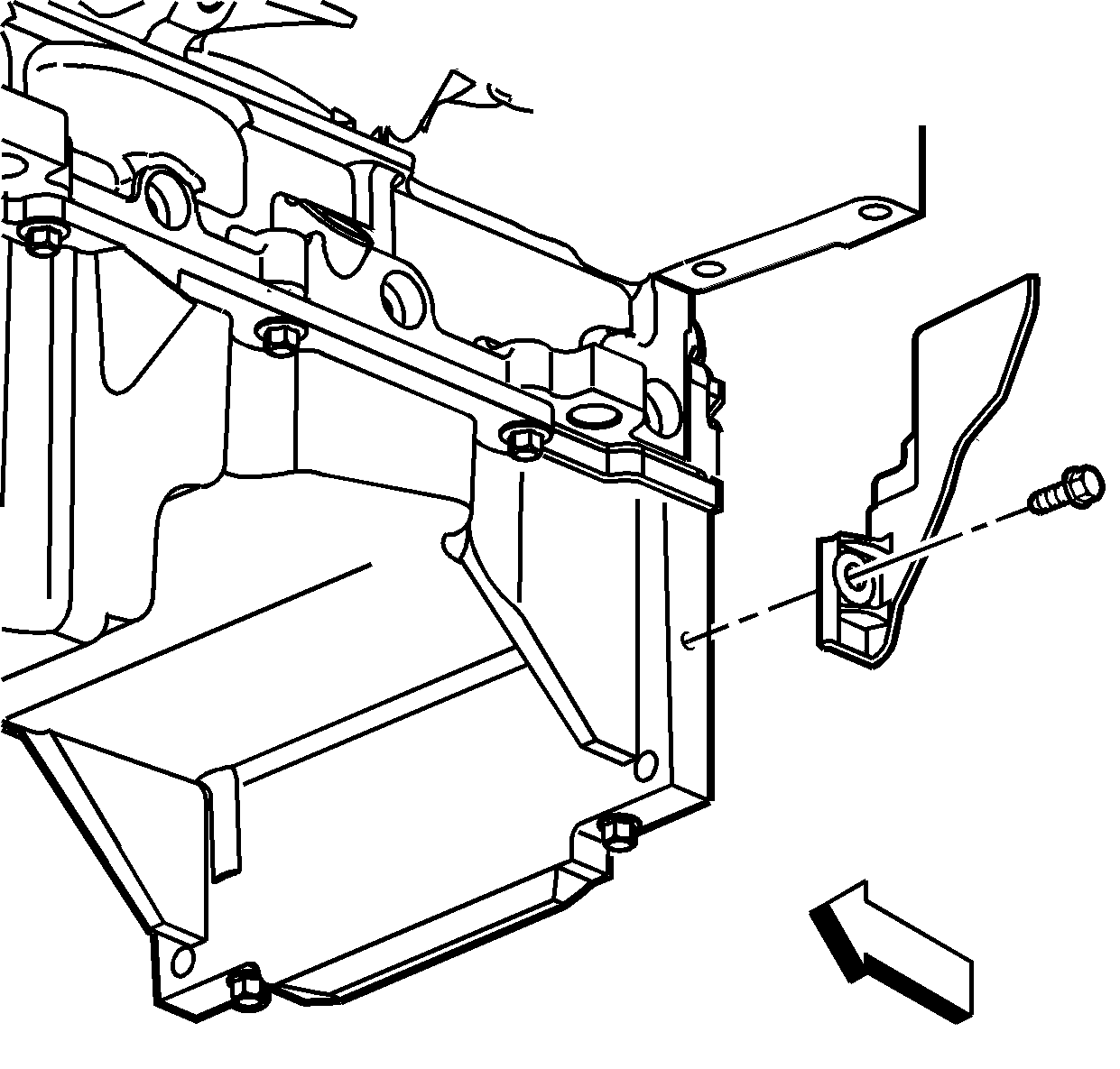
Important: The original oil pan gasket is retained and aligned to the oil pan by rivets. When installing a new gasket, it is not necessary to install new oil pan gasket rivets.
DO NOT use the oil pan gasket again. When installing the oil pan, install a NEW oil pan gasket.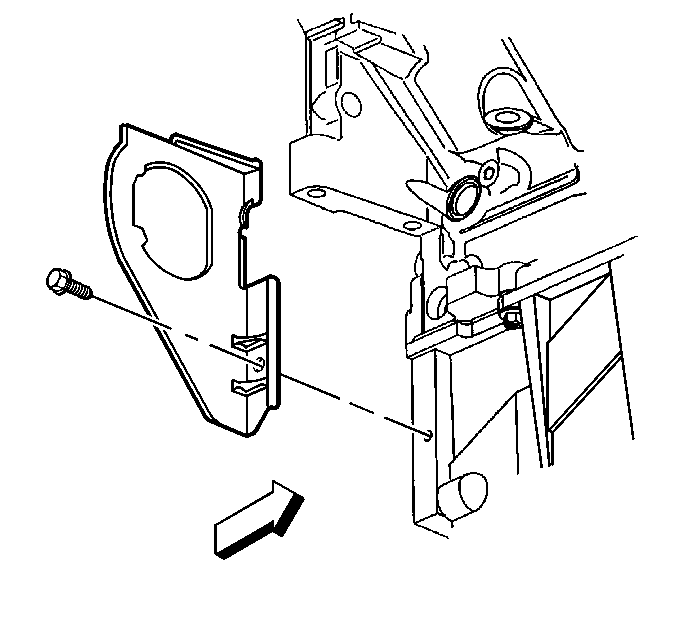
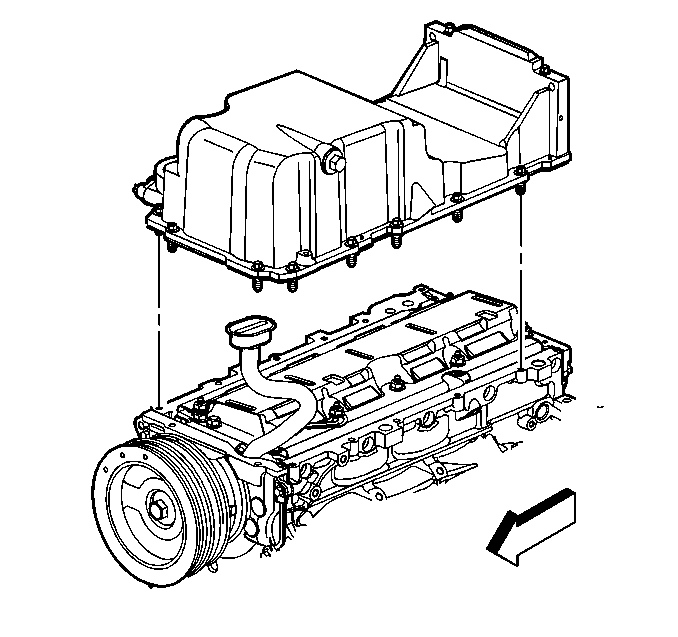

Important: DO NOT allow foreign material to enter the oil passages of the oil pan, cap, or cover the openings, as required.
Use care not to gouge, score, or damage the oil pan sealing surface.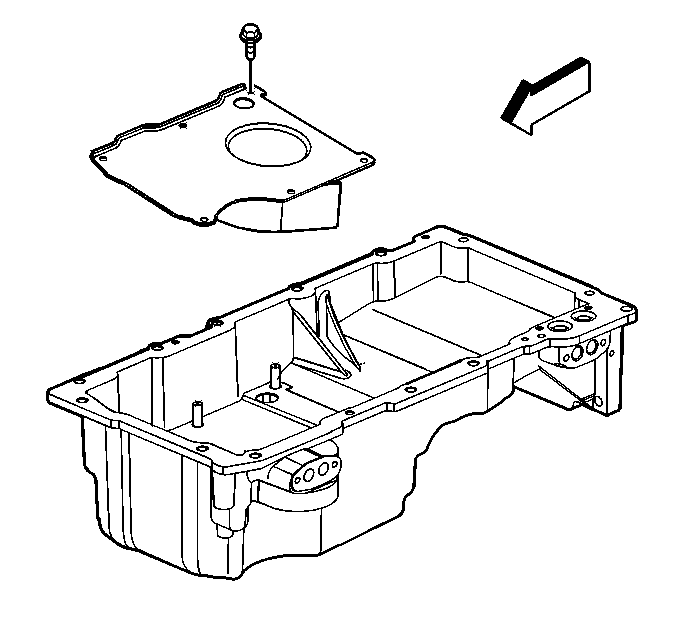
Installation Procedure
- Install the oil pan baffle and bolts.
- Apply sealant GM P/N 12346004 (Canadian P/N 10953480) or equivalent to the threads of the oil pan, oil gallery plugs.
- Install the oil gallery plugs (1).
- Install the oil filter tube (1), gaskets (2), bolts (3), and studs (4).
- Tighten the oil filter tube bolts to 12 N·m (106 lb in).
- Tighten the oil filter tube studs to 12 N·m (106 lb in).
- Apply a 5 mm (0.2 in) bead of sealant GM P/N 12378521 (Canadian P/N 88901148),or equivalent 20 mm (0.8 in) long to the engine block. Apply the sealant directly onto the tabs of the front cover gasket that protrude into the oil pan surface. Refer to . Adhesives, Fluids, Lubricants, and Sealers .
- Apply a 5 mm (0.2 in) bead of sealant GM P/N 12378521 (Canadian P/N 88901148), or equivalent 20 mm (0.8 in) long to the engine block. Apply the sealant directly onto the tabs of the rear cover gasket that protrude into the oil pan surface. Refer to Adhesives, Fluids, Lubricants, and Sealers .
- Preassemble the oil pan gasket to the pan.
- Install the oil pan, gasket and bolts to the engine block.
- Tighten bolts finger tight. Do not overtighten.
- Place a straight edge across the rear of the engine block and the rear of the oil pan at the transmission housing mounting surfaces.
- Align the oil pan until the rear of engine block and the rear of oil pan are flush or even.
- Tighten the oil pan-to-block and oil pan-to-front cover bolts to 25 N·m (18 lb ft).
- Tighten the oil pan-to-rear cover bolts to 12 N·m (106 lb in).
- Measure the oil pan-to-engine block alignment.
- Install the right closeout cover and bolt.
- Install the left closeout cover and bolt.
- Install the engine assembly. Refer to Engine Replacement .

Notice: Use the correct fastener in the correct location. Replacement fasteners must be the correct part number for that application. Fasteners requiring replacement or fasteners requiring the use of thread locking compound or sealant are identified in the service procedure. Do not use paints, lubricants, or corrosion inhibitors on fasteners or fastener joint surfaces unless specified. These coatings affect fastener torque and joint clamping force and may damage the fastener. Use the correct tightening sequence and specifications when installing fasteners in order to avoid damage to parts and systems.
Important: The alignment of the structural oil pan is critical. The rear bolt hole locations of the oil pan provide mounting points for the transmission housing. To ensure the rigidity of the powertrain and correct transmission alignment, it is important that the rear of the block and the rear of the oil pan are flush or even. The rear of the oil pan must NEVER protrude beyond the engine block and transmission housing plane.
Do NOT use the oil pan gasket again. It is not necessary to rivet the NEW gasket to the oil pan.Tighten
Tighten the oil pan baffle bolts to 12 N·m (106 lb in).
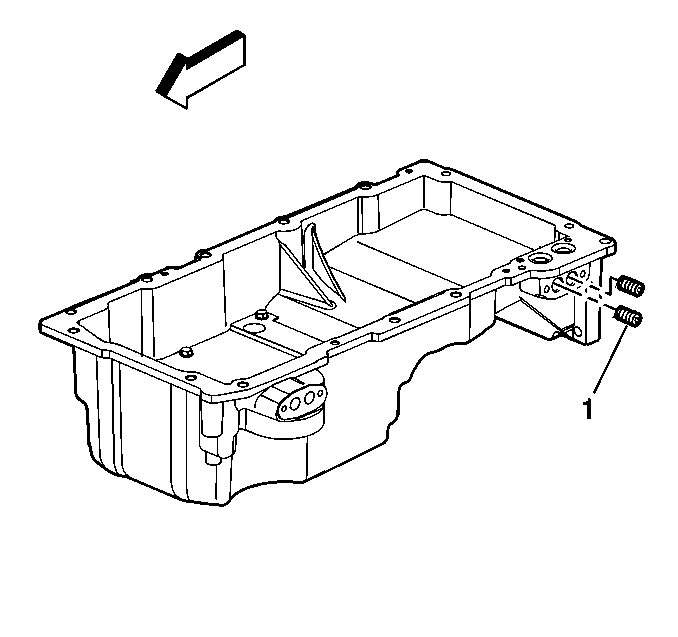
Tighten
Tighten the oil gallery plugs to 25 N·m (18 lb ft).
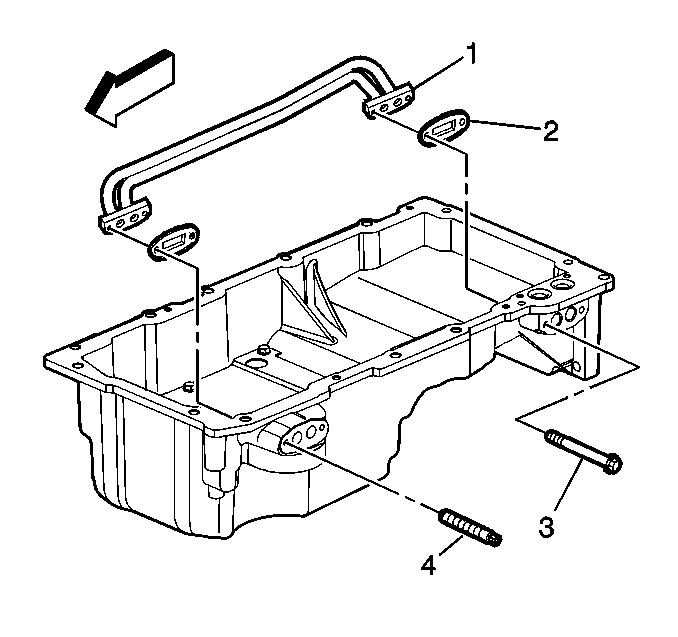
Tighten
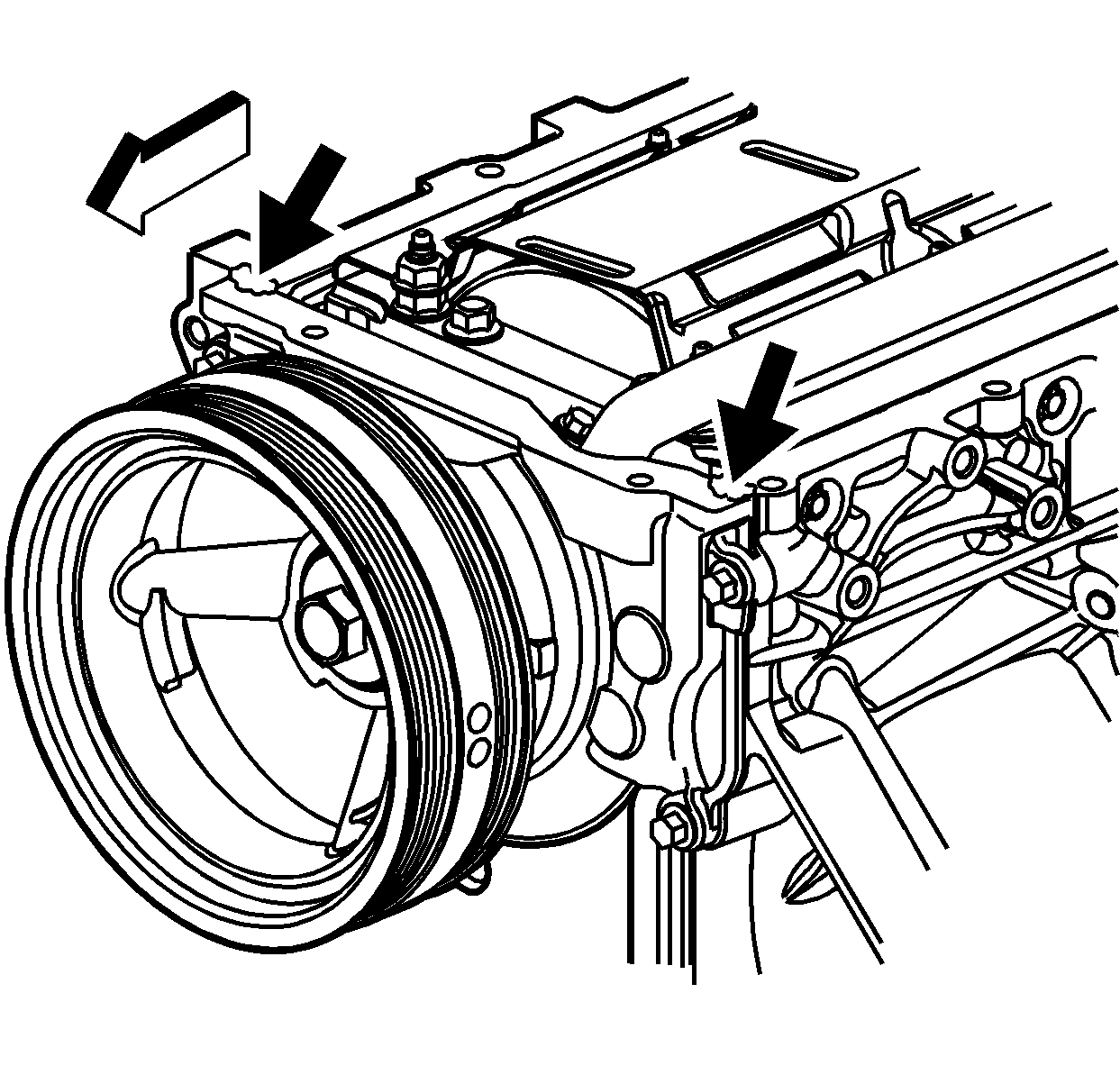
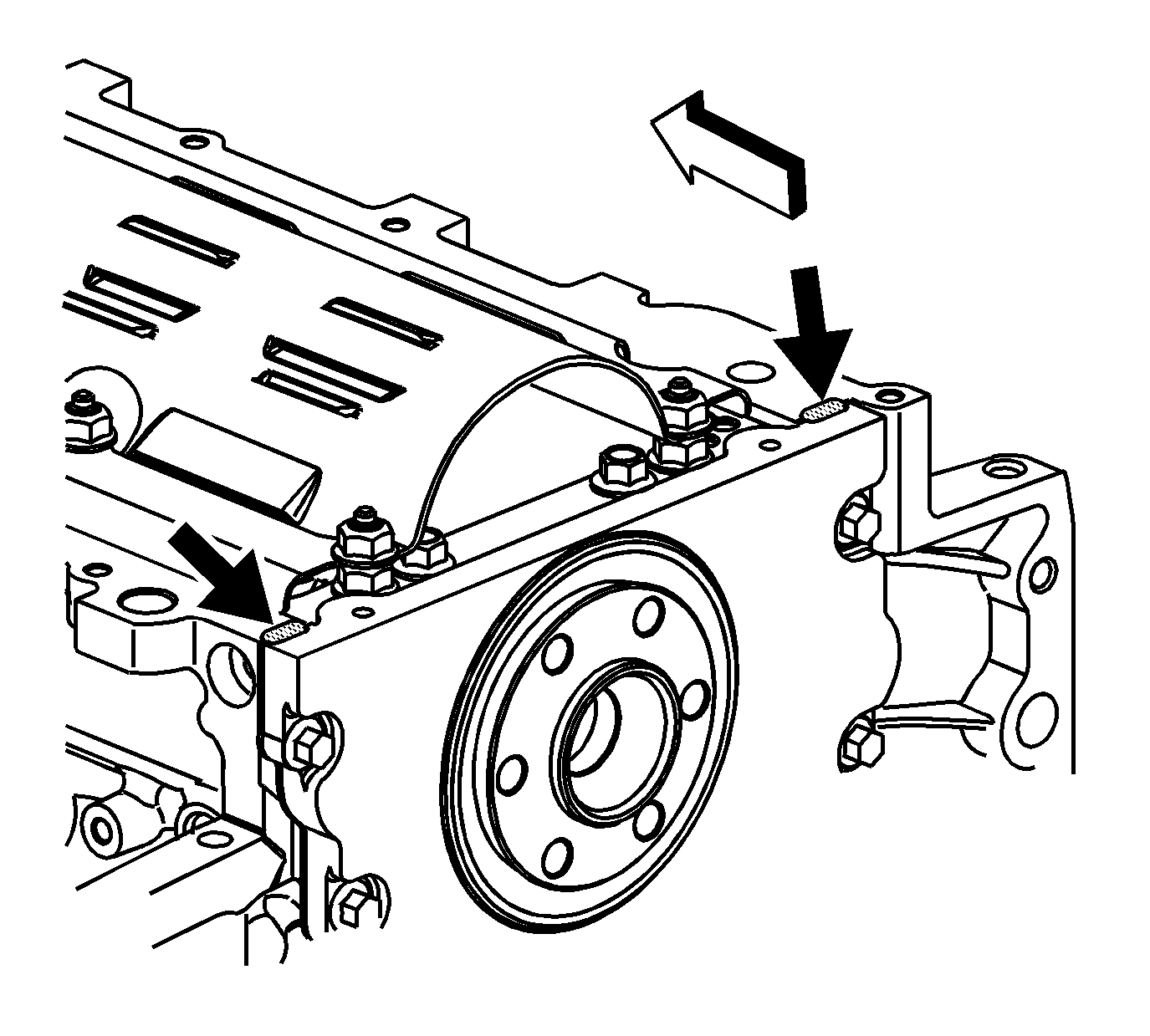

Important: Be sure to align the oil gallery passages in the oil pan and engine block properly, with the oil pan gasket.
| 7.1. | Install the gasket onto the oil pan. |
| 7.2. | Install the oil pan bolts to the pan and through the gasket. |
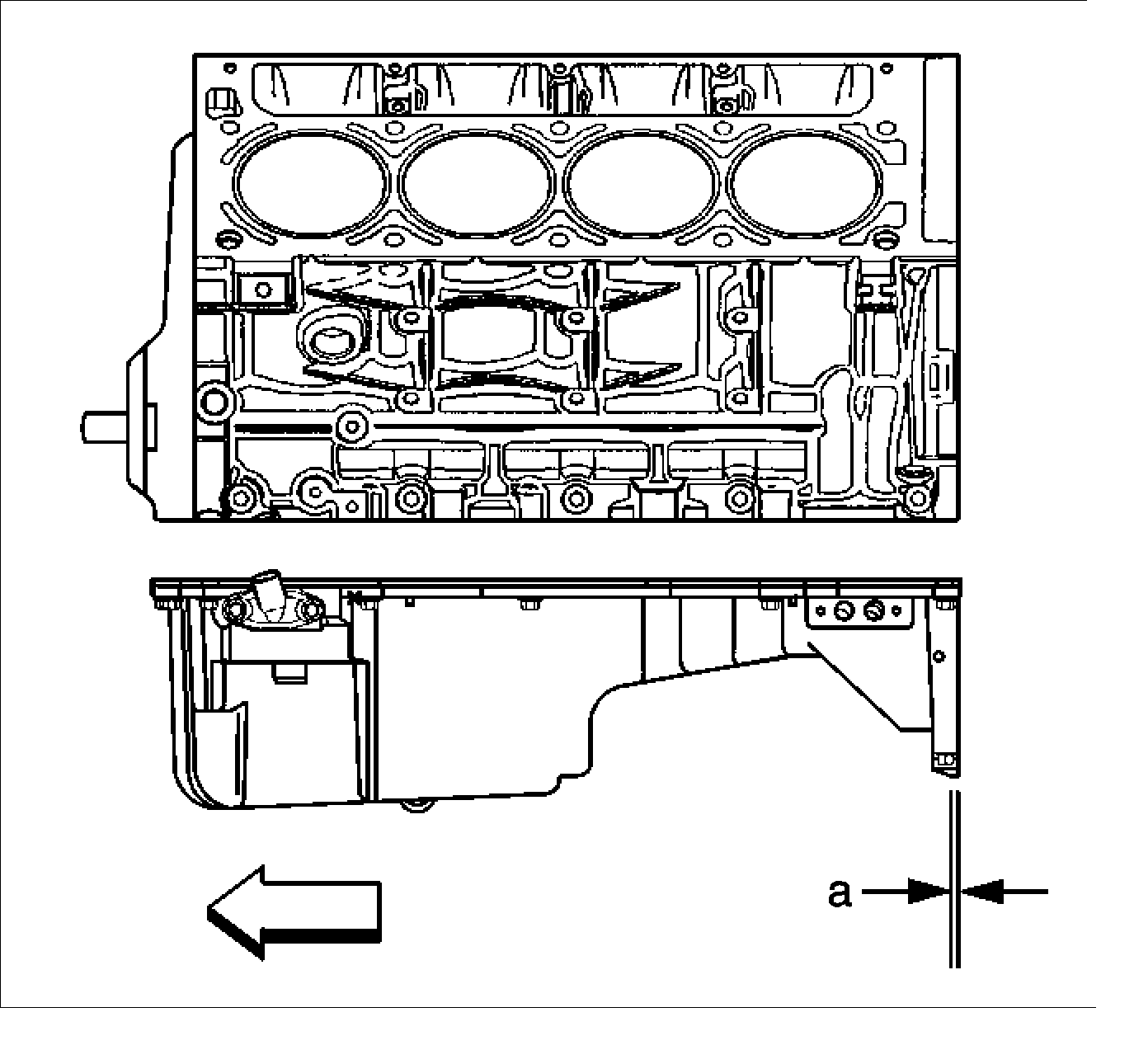
Tighten
| 12.1. | Place a straight edge across the rear of the engine block and rear of the oil pan at the transmission housing mounting surfaces. |
| Important: The rear of the oil pan must NEVER protrude beyond the engine block and transmission housing mounting surfaces. |
| 12.2. | Insert a feeler gage between the straight edge and the oil pan transmission housing mounting surface and check to make sure that there is no more than a 0.1 mm (0.0004 in) gap between the pan and the straight edge. |
| 12.3. | If the oil pan alignment is not within specifications, remove the oil pan and repeat the above procedure. |


